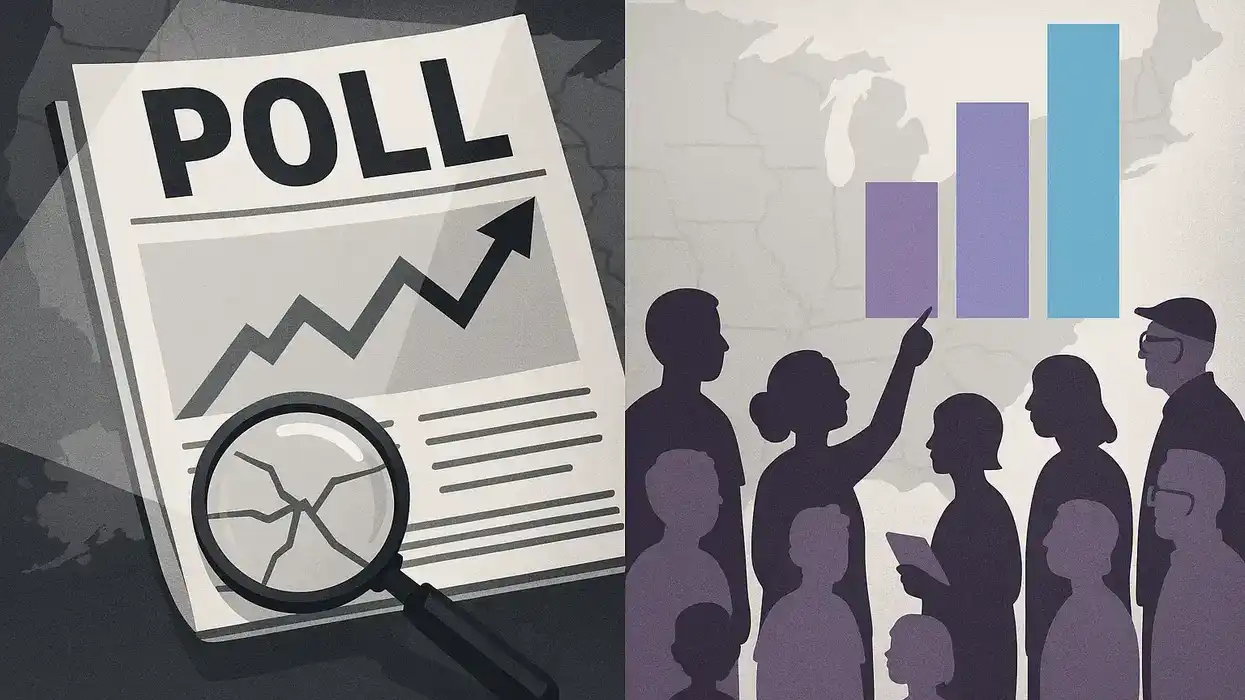Bayer is a political activist and specialist in the rhetoric of social movements. She was the founding director of the Oral Communication Lab at the University of Pittsburgh.
At a recent campaign rally in Raleigh, N.C., Vice President Kamala Harris detailed her plan to strengthen the economy through policies lifting the middle class. Despite criticism from Republicans like Sen. Tim Scott (S.C.) — who recently said, “The American people are smarter than Kamala Harris when it comes to the economy” — some economists and financial analysts have a very positive assessment of her proposals.
Respected Wall Street investment bank Goldman Sachs recently gave Harris high marks in a report compared to former President Donald Trump’s plan to increase tariffs. “We estimate that if Trump wins in a sweep or with divided government, the hit to growth from tariffs and tighter immigration policy would outweigh the positive fiscal impulse,” the bank’s economists wrote.
However, missing from these conversations is the interconnectedness between the economy and another top issue for voters: reproductive rights.
Even though intimately connected, the economy and abortion access continue to be cast as distinct issues. As an economic variable, abortion is as much a kitchen table issue as the cost of groceries or housing. Laws restricting abortion not only lead to poorer economic outcomes for women and their families, these laws undercut the overall economy by handicapping women’s presence in the workforce, a variable essential to economic growth and prosperity.
Women denied an abortion have higher levels of debt, housing and food insecurity, eviction, poor credit, and significantly higher rates of household poverty throughout their lives than women able to abort an unwanted pregnancy.
In a study conducted by the University of California San Francisco of 1,000 women — half of whom were able to obtain an abortion and half of whom were not — researchers found that being denied an abortion, rather than having one, resulted in greater harm. Women denied an abortion had significantly higher pregnancy-related medical emergencies, physical and emotional complaints, and ongoing financial hardship compared to women able to have an abortion. Most tellingly, the financial trends between these groups were similar until those women seeking an abortion were turned away.
The medical costs of prenatal care and childbirth — even for women with health insurance — is significant, averaging $4,500 on out-of-pocket expense. Women without insurance coverage often skimp or forgo essential prenatal care. These costs are amplified since childbirth invariably interrupts a woman’s paid work, resulting in lost income. With less than 10 percent of workers currently eligible for paid medical leave, lost wages compound the financial stress of an unwanted pregnancy. It’s not surprising that the rate of childhood poverty decreased following the 1973 Supreme Court ruling legalizing abortion.
The financial hardship for women denied an abortion tends to be greatest during the four or five years following birth, but the struggle continues. The cost of returning to work when daycare is needed, ongoing expenses of supporting another child, and the secondary costs of emotional and medical complications for an unwanted pregnancy handicap a woman and those dependent on her. Sixty percent of women seeking abortions are already mothers who cannot support, on multiple levels, another child. Women able to obtain an abortion are largely spared from these handicaps.
Women able to abort an unwanted pregnancy achieve higher educational, employment and income levels than women denied an abortion. And while some women do report sadness or regret regarding the “situation” prompting them to choose an abortion, they do not report regretting the decision itself, a fact confirmed by 95 percent of women in the Turnaway Study who were able to obtain an abortion.
Information on the actual effects of abortion on women, their families and the larger cultural environment has grown significantly in the decades following Roe. Yet misinformation has remained essentially unchanged. Common myths such as “abortion is dangerous to a woman’s health,” “abortion casts a long, painful shadow over her emotional well-being” and “killing a fetus and is akin to murder” are still prevalent in the narrative.
These chilling claims are reminiscent of the same statements I heard from anti-abortion protesters 50 years ago as a clinic escort for Planned Parenthood, and that continue to dominate anti-abortion rhetoric. We have an opportunity now to broaden the discussion of abortion based on what we have learned from decades of research rather than legitimizing arguments against abortion that are little more than subjective religious views.
Anti-abortion politicians like Scott find it “cruel” and “callous” to talk abortion within an economic framework, as if the financial hardship women face is inconsequential. Even if correct, economic consequences are insignificant to protecting a fetus.
Abortion rights have been protected in every state voting on the question thus far, demonstrating that women aren’t willing to sacrifice their autonomy and material well-being to protect the religious beliefs and sensibilities of anti-abortion politicians. Rather than talking about the need to lift the middle class and restore full abortion rights as mutually exclusive policies, we must talk about lifting the middle class by restoring abortion rights.



















